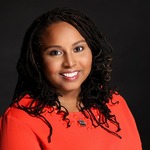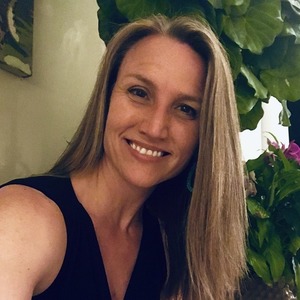How to Incorporate Inclusive Language in Your Marketing Materials
// By Althea Fung //
 Language can build relationships and forge bonds, but it can also create barriers. Content writers and marketers carry implicit biases that can rear their ugly heads when crafting copy.
Language can build relationships and forge bonds, but it can also create barriers. Content writers and marketers carry implicit biases that can rear their ugly heads when crafting copy.
“Bias in and of itself isn’t a bad thing. Evolution developed it for survival,” says Kristen Syrett, PhD, an associate professor and undergraduate program director in the Department of Linguistics at Rutgers University in New Jersey. “But bias in language can have negative consequences. Linguistic bias can be used to exclude people from dialogue, but inclusive language can be used to invite people into a dialogue and recognize differences.”

Kristen Syrett, PhD, associate professor and undergraduate program director in the Department of Linguistics, Rutgers University
To help writers proactively create inclusive content, Syrett and a team of linguists in the Linguistic Society of America’s Committee on the Status of Women in Linguistics developed the Guidelines for Inclusive Language, which was an update to the previous Guidelines for Nonsexist Usage. It includes tips on how to address issues related to race and ethnicity, disabilities, and gender.
“There are a number of different practices we all can engage in to help to show we are aware of and appreciate diversity,” Syrett says.
What Is Inclusive Language?
Inclusive language is language that avoids terminology that expresses or implies ideas that are sexist, racist, or otherwise biased, discriminatory, or denigrating to any group of people. For health care, ensuring content is inclusive can make a difference in the experience of potential patients.
“When you have expressions in our language that indicate patriarchy, misogyny, or racist thinking, that can become part of the language that people internalize, and it can therefore shape their perspective of the world around them and others,” Syrett says. “By using inclusive language, we’re showing in a very clear way that we recognize that people are different, and we don’t expect them to be a certain way, and that’s a positive thing.”
She says even using generalizations that may be deemed positive like “Southern women are polite” or “Asians are good at math” can have an isolating effect on individuals who don’t necessarily have the same experiences, and it reinforces stereotypes.
“You have ways of speaking that can reify certain views. If we can recognize them, we can start to change them,” Syrett adds.
Put Inclusive Language into Action
“If you were raised in the same time I was going to school, you were probably taught that ‘he’ is the default third-person pronoun. But it’s not neutral. It expresses male grammatical gender,” Syrett says. “A simple change is to use ‘they’ as a third-person singular substitute. This is now widely accepted among newspapers, journals, and dictionaries.”
She says making small changes like using gender-neutral pronouns or using person-centered language, which refers to the person before the condition/disorder, can have a significant impact on how a person engages with content.
“It’s important to recognize that the rules that we grew up learning were created at some point by someone, a person. If these patterns are arbitrary, why do they need to stick around forever?”
“It’s common to use terms like alcoholic or learning disability. You may think because you’ve been raised to use these expressions, you’re saying something completely innocuous. But speaking with someone who struggles with the disease of alcoholism or someone who has a cognitive disorder may take offense,” she says. “It’s important to be aware of the range of expressions and what they convey.”
Here are some inclusive language recommendations to consider when crafting content.
| Instead of Using: | Consider Using: |
| Addict | Person who struggles with addiction |
| AIDS sufferer/victim | Person living with HIV |
| Alcoholic | Person with alcoholism/alcohol problem |
| Albino | Person with albinism |
| Birth defect | Congenital disorder/disability |
| Biologically male/female | Assigned male/female |
| Blind | Person who is blind/has low vision |
| Deaf | Person who is deaf |
| Diabetic | Person with diabetes |
| Disabled person/handicapped person | Person with a disability |
| Dwarf/midget | Person of short stature |
| Epileptic | Person who has epilepsy |
| Hearing-impaired | Person who is hard of hearing |
| Male pattern balding | Hair loss |
| Special needs | Needing accommodation |
| Substance abuse | Substance use disorder, person living with substance use disorder |
| Wheelchair-bound | Person who uses a wheelchair |
Gender Inclusive Language
| Instead of Using: | Consider Using: |
| s/he | they |
| Chairman | Chair |
| Man-made | machine-made, synthetic, artificial |
Race and Ethnicity Inclusive Language
| Instead of Using: | Consider Using: |
| Minority | Person of color
or Underserved/underrepresented person |
| Third-world country | Developing nation |
| Alien/foreigner | Immigrant |
| Illegal immigrant | Undocumented person |
In general, you should identify a person’s race or ethnicity only if it is essential to the content. When identifying racial groups, some things to remember:
- Black and African American are not always interchangeable. Some people prefer the term Black because they may identify as African, Afro-Caribbean, Afro-Latino, or some other group.
- Hispanic and Latinx(a/o) are not always interchangeable. Hispanic refers to people from Spanish-speaking countries. Latinx relates to people of Latin American descent who can be of any background or language. People from Mexico, Cuba, or Peru who speak Spanish are Hispanic and Latinx. Brazilians who speak Portuguese are Latinx but not Hispanic. Spanish-speaking people in Spain are Hispanic but not Latinx.
- Try to be specific when referring to groups. For example, when referring to a person from Malaysia, use Malaysian instead of Asian.
- Native American and American Indian are both acceptable. Never use Indian as a shorthand for American Indians.
- BIPOC stands for Black, Indigenous, and People of Color. This is a relatively new acronym, dating back to 2013 on social media. The acronym was created because the history of Black and Indigenous people in North American makes the distinction between them and other People of Color necessary.
Inclusive Language Resources
“It’s hard to kick those habits, because it was so ingrained in how we were taught how to write and how to speak,” Syrett says. “But it’s important to recognize that the rules that we grew up learning were created at some point by someone, a person. If these patterns are arbitrary, why do they need to stick around forever? They’re subject to change.”
“In the health care setting, language is the medium with which you are conveying very important content and trying to establish some kind of rapport with your patients.”
She says it’s essential for content teams to seek out training, particularly from subject matter experts in the field to ensure they are up to date in the evolution of language.
“In the health care setting, language is the medium with which you are conveying very important content and trying to establish some kind of rapport with your patients. It’s important to engage in some kind of training so that you’re allowing others to feel recognized and heard, not excluded, or objectified,” she says.
Hospitals with a diversity and inclusion department can seek guidance from that team on best practices in creating inclusive, health-literate content. In addition to Guidelines for Inclusive Language, writers can reference the Diversity Style Guide, the Disability Language Style Guide, and the Conscious Style Guide for tips.
Althea A. Fung is a digital content strategist and healthcare journalist. Reach her at fungus@altheafung.com.

